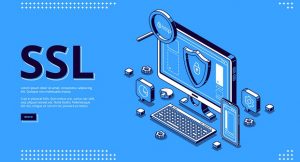 When browsing the internet, most people rely on visual cues provided by their web browsers to determine whether a site is safe. Google Chrome, by far the most popular browser with over 60% of the market share, has introduced features that signal whether a site has a valid SSL certificate. But while these features are helpful, they can also be misleading.
When browsing the internet, most people rely on visual cues provided by their web browsers to determine whether a site is safe. Google Chrome, by far the most popular browser with over 60% of the market share, has introduced features that signal whether a site has a valid SSL certificate. But while these features are helpful, they can also be misleading.
What Does “Secure” Actually Mean?
When you visit a website with an SSL certificate, your browser may display a padlock icon and label the site as “secure.” This means that the connection between your browser and the website is encrypted. Any data you input—like passwords, personal details, or credit card numbers—is transmitted securely, making it difficult for third parties to intercept.
However, “secure” only refers to the encryption of data, not the trustworthiness of the site itself. In other words, a secure connection ensures that the data you're sending is protected from eavesdroppers—but it doesn't mean you're sending it to someone who should have it in the first place.
Hackers Are Exploiting SSL to Trick You
Cybercriminals have caught on. It’s now incredibly easy and inexpensive—even free—to obtain an SSL certificate. This allows malicious websites to show the same green padlock and "secure" label as legitimate ones.
That means a phishing site designed to steal your login credentials can display all the same browser trust indicators as your bank’s real website. This creates a false sense of security and increases the likelihood that users will unknowingly hand over sensitive information to bad actors.
Design Deception: When Looks Can Kill
The modern web is very design-oriented, and hackers use this to their advantage. Phishing pages are often near-perfect replicas of the sites they’re imitating. If you land on what looks like the PayPal login screen, and your browser says it's “secure,” you might instinctively enter your credentials—without verifying whether the site is actually PayPal.
This tactic works so well because most people don't scrutinize the full URL. They trust the padlock and the design, without realizing that a deceptive subdomain like `paypal.login-info.example.com` is not the real PayPal website.
The Importance of the URL Bar
 One of the most powerful tools in your security arsenal is also one of the most overlooked: the address bar. Legitimate websites use predictable and recognizable domain names. If you're logging into PayPal, the domain should be exactly "paypal.com"—nothing more, nothing less.
One of the most powerful tools in your security arsenal is also one of the most overlooked: the address bar. Legitimate websites use predictable and recognizable domain names. If you're logging into PayPal, the domain should be exactly "paypal.com"—nothing more, nothing less.
Always double-check the full URL before entering sensitive information. Cybercriminals often buy domains that look or sound official and use subdomains or typosquatting (e.g., `paypa1.com`) to fool you.
Best Practices for Safer Browsing
To minimize your risk of falling victim to phishing or fraudulent websites, follow these tips:
- Avoid clicking links in emails or text messages unless you're absolutely sure of the sender.
- Type URLs directly into your browser instead of using links, especially when logging into sensitive accounts.
- Use a reputable password manager, which can help detect fake websites by only auto-filling credentials on recognized URLs.
- Enable multi-factor authentication on all accounts that offer it, adding an extra layer of protection.
- Keep your browser and antivirus software up to date, as these tools help detect and block known malicious sites.
While SSL encryption is a step in the right direction for internet safety, it’s far from a guarantee that the site you’re visiting is legitimate. Trust indicators like the padlock icon can be helpful, but they’re not foolproof.
The next time you see a “secure” message in your browser, remember: secure doesn’t always mean safe. Always verify the URL, avoid clicking suspicious links, and stay alert to keep your information out of the wrong hands.
At Integrated Technology Systems, we know that true cybersecurity goes beyond browser padlocks and visual trust indicators. In a digital world where hackers exploit even the most trusted symbols, it's crucial to have a proactive, layered defense strategy in place.
Don't leave your business or personal data vulnerable to deceptive websites and phishing scams. Let our cybersecurity experts assess your systems, train your team on threat awareness, and implement advanced tools that actually protect you—not just make you feel protected.
Integrated Technology Systems
6 East 45th Street, Suite 400
New York, NY 10017
212-750-5420
https://www.itsnyc.com
Like our Facebook page



